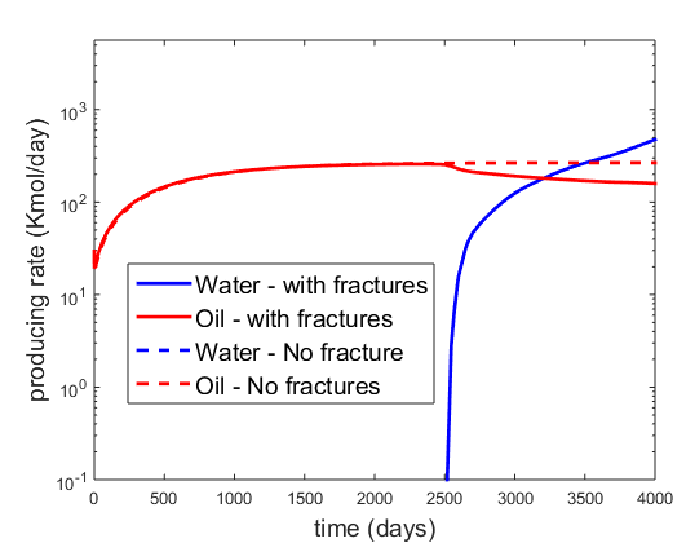Conducting reservoir-scale fracture modeling on the Natih Formation in Jebel Madmar, northern Oman:
Jebel Madmar features a well-preserved anticline linked to an overturned thrust fault near the Salakh Arch. This geological formation showcases the Cretaceous Natih Formation carbonate platform and the underlying Nahr Umr shale. The University of Montreal (2003) and the PDO development team (2003-2004) conducted a study on its structure and stratigraphy by combining high-resolution satellite analyses, outcrop observations, and geochemical experiments. Their findings confirmed the existence of three primary structures in Madmar: NE and NW-oriented fractures along with WNW-oriented normal faults. These structures predate the formation of the Madmar anticline. The NE and NW-oriented fractures form a series of nested fractures at various scales, influenced by the underlying stratigraphy. The NE-oriented fractures often display three-dimensional en echelon patterns and parallel overlapping fracture structures.

The objective of this fracture modeling exercise is the Natih-E unit, and the characteristics of the model are summarized as follows:
The study area covers a sector of 6000*6000 meters at the rear edge of the Madmar anticline.
The primary structural fractures within wells and between wells in this area include: WNW normal faults, NW fractures, and NE regional fractures.
A total of 11 coarse Mechanical Layers are established for Natih-E.
The fractures and fracture sets have near-vertical dip angles.
Parameters such as fracture width, fault displacement, and other structures (such as low-angle thrust faults) are not considered in this fracture modeling exercise.
Using field exposures and aerial photographs, creating fracture templates for the NE, NW, and WNW trends of the Natih-E unit and establishing fracture models for each layer through operations like copying, pasting, and combining, while also determining the vertical intersections with the stratigraphic contacts.

Simulating CO2 injection in fractured heterogeneous reservoirs involves characterizing the fracture network, setting up numerical models to represent fluid flow dynamics, and analyzing pressure responses and saturation profiles. By applying CO2 injection scenarios and assessing miscibility with oil, the simulation aims to enhance sweep efficiency and maximize oil recovery. Continuous monitoring and optimization strategies, including economic analysis and risk assessment, are crucial for evaluating the effectiveness and feasibility of CO2 injection in fractured reservoirs.
The fracture model was simplified to include one layer with a single set of fractures. Additionally, sedimentation from a braided river-delta plain distributary channel system was overlaid, and numerical simulation of CO2 injection into the fractured reservoir was conducted using an in-house simulator.

Water Saturation:
3D profile and cross-section plots

There is early water breakthrough in a fractured model compared to model without fractures